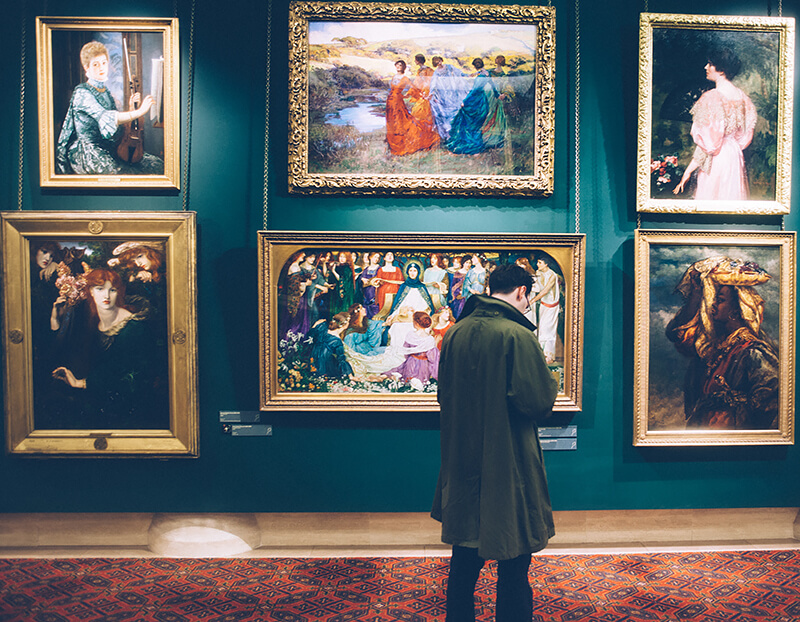Historical Roots of Graffiti
Graffiti has ancient origins, dating back to Roman citizens scribbling messages on walls. Archeological findings in Pompeii show that people have been using walls as canvases for centuries. Whether expressing affection, hatred, or simply announcing one's presence, Romans made their mark on history.
During the French Revolution, rebels defaced aristocratic symbols, targeting elitist artwork as part of the broader revolution against societal norms. This set a precedent for graffiti as a form of political dissent.
The Berlin Wall's western side became a canvas for messages of hope, freedom, and protest, transforming a stark divider into a symbol of artistic activism. Meanwhile, the eastern side remained gray and silent, highlighting the power of expression.
In mid-20th century America, gang culture adopted graffiti as a signature. New York's alleys and Chicago's train yards became canvases for names that told stories of community, identity, and rebellion.
The work of artists like Keith Haring and Banksy elevated graffiti's status. Haring's subway drawings offered whimsical yet poignant urban commentaries, while Banksy's global works challenge art's sanctity and societal norms.
Today, graffiti continues to play a role in social movements, reclaiming urban spaces as platforms for free speech. From ancient walls to modern cityscapes, graffiti marks the journey of public expression, celebrating its defiant spirit against the wash of time.
Graffiti and Social Movements
In recent years, graffiti has become a powerful tool for social movements, serving as both a canvas and a megaphone for marginalized voices. The Black Lives Matter movement saw murals and tags bearing names like George Floyd become rallying points, creating moments of remembrance and confronting societal issues.
In regions of conflict, such as Gaza, graffiti emerges as a voice of the people, marking accounts of resistance onto walls despite political pressures. These artworks challenge mainstream narratives, speaking directly to those on the ground while drawing global attention.
The beauty of graffiti in social movements lies in its authenticity and immediacy. When organized rallies dissipate, these murals and tags linger, inviting introspection and conversation. By occupying urban spaces, graffiti helps reclaim territories from gentrification, manifesting the fight for communal identity.
While critics may dismiss it as vandalism, graffiti in this context serves as a raw, unfiltered expression of personal and collective struggles. It memorializes, challenges, and unifies, defying both erasure and time with its vivid hues and spirit.
The Art vs. Vandalism Debate
The debate over graffiti as art or vandalism stirs discussions about legitimate artistic expression versus defacement. Legal and societal perceptions play a crucial role, often overshadowing the artistic merit of these creations.
Legally, graffiti often faces strict regulations designed to protect public and private property. Artists might face fines or even jail time, regardless of the quality or message of their work. This legal framework rarely distinguishes between territorial markings and carefully crafted murals.
Societal perceptions complicate matters further. In some neighborhoods, graffiti is seen as a sign of urban decay, while in gentrified areas, it's celebrated as street art. This dichotomy reveals a broader societal hypocrisy: art is praised when it aligns with commercial interests but condemned when it disrupts aesthetic norms.
These conflicting views impact graffiti artists, who must either work in secrecy or conform to societal expectations. Institutional recognition, when granted, often favors certain artists based on factors beyond talent or impact.
However, perceptions are evolving. Some cities now host initiatives to integrate street art into public spaces legally, shifting the dialogue from punishment to appreciation. Despite ongoing challenges, artists continue to transform cityscapes, using their work to challenge conventions and offer social commentary.
Graffiti's Role in Urban Identity
Graffiti breathes life into cities, transforming urban spaces into vibrant storyboards. It serves as a bridge between individuals and community, fostering a sense of belonging among those who encounter it daily. For voices often unheard in mainstream dialogues, these walls become megaphones, declaring existence and aspiration.
Cities like New York and San Francisco wear their graffiti as a cultural badge, enhancing the sensory experience of urban life. From elaborate murals to political tags, these expressions take the pulse of a city and inscribe it for all to see.
While some cities embrace graffiti, others attempt to sanitize urban spaces for commercial appeal. This tension between self-expression and cleanliness lies at the heart of urban identity. In gentrified areas, graffiti often retains an air of rebellion, asserting historical identity amidst new development.
Graffiti acts as a democratic platform, encouraging dialogue and asserting political stances. It gives urban spaces a voice that speaks for and about its people, transcending linguistic barriers and societal divides.
In the end, graffiti doesn't just reflect urban identity—it shapes it. It captures the essence of a city, ensuring that every structure becomes more than just a construction, but a testament to the human experience.
The Commercialization and Gentrification of Graffiti
In the heart of urban culture, graffiti stands as a form of artistic resistance and expression. However, as cities grow under capitalism's influence, this raw art form faces an identity crisis between commercialization and its rebellious roots. The transformation of graffiti from alleyways to curated galleries both elevates and potentially diminishes its impact as a voice for the unheard.
The mainstream adoption of graffiti presents a paradox. Street art now graces museum interiors, attracting art lovers and critics alike. Banksy exemplifies this duality—his works sell for millions, yet his message remains subversive. While this could validate graffiti in high art circles, it also risks entangling it in commodification.
As graffiti gains recognition, it faces the challenge of maintaining its integrity. Marketers, developers, and advertisers eager to capitalize on its street credibility often leave purists questioning if the art can withstand commercial appropriation. Corporations use graffiti-inspired designs as trendy symbols, disconnected from their anti-establishment roots.
This commercialization poses a dilemma for artists, especially those in gentrifying areas. Can they stay authentic as their surroundings become backdrops for city tours and Instagram posts? The art form risks being complicit in the consumerist culture it once undermined, as it adorns luxury products and ad campaigns.
Yet, within this commercial shift, graffiti remains a form of preservation and protest. As neighborhoods change, street artists continue to tell community stories through their work. They push back against sanitized urban development, keeping the vibrant essence of marginalized communities alive.
Graffiti's future balances precariously between raw authenticity and curated acceptability. While some walls are claimed by developers and adorned with sanctioned art, the spirit of authentic graffiti persists. It evolves, refusing to fade completely, whispering stories of creativity in the face of gentrification.
Graffiti, with its bold colors and statements, reflects the pulse of urban life. It captures both struggles and triumphs of communities. As it evolves, graffiti continues to be a voice for those challenging the status quo and celebrating their identity in an often overlooking world.





















